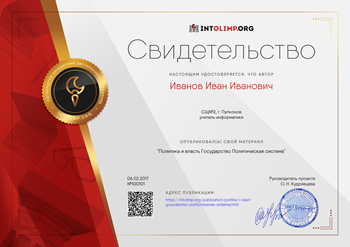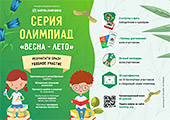Конспект урока (8 класс)
Тема: Путешествие. Экскурсия по Лондону.
Цели: повторить и изучить новую лексику по теме «Путешествие», практиковать учащихся в устной и письменной речи, усовершенствовать умения чтения и перевода, развитие социокультурной компетентности, воспитывать интерес к истории страны изучаемого языка.
Тип урока: комбинированный урок
Ход урока
Teacher: Good morning, dear children. I am glad to see you. How are you? Let's start our work
Today we're having a very interesting and unusual lesson, because we'll make a trip to London. We’ll practice using the direct and reported speech, read the text and do some tasks.
But before we start our journey, let’s check your homework.
She said that she enjoyed travelling a lot.
He said that he had visited Spain the last/ previous year.
He said that travelling solo was the best the best thing he had ever done.
Jane said that she would go to Italy the following year.
Tim said that he was looking for an interesting destination.
Warm up.
Teacher: So, let's start our journey. Look at the board and match the proverbs with their translations:
Every country has its customs. – У каждой страны свои обычаи.
When at Rome, do as Romans do. – Когда находишься в Риме, поступай как римляне.
East or West, the home is best. – В гостях хорошо, а дома лучше.
An Englishman’s home is his castle. – Мой дом – моя крепость.
Travel broadens the mind. – Путешествие расширяет кругозор.
Thousand miles begin with a single step. – Путешествие начинается с первого шага.
The main part of the lesson.
Teacher: Very good. Now look at the board. Today we’ll visit such interesting places:
1. Buckingham Palace
2. St. Paul’s Cathedral
3. Museum of Madame Tussauds
4. The House of Parliament
5. The British Museum
6. The Thames
Teacher: Now we begin our trip and the first stop is Buckingham Palace.
Pupil 1. Buckingham Palace is one of London's most popular historical buildings. Buckingham Palace built in 1703 by John Sheffield, Duke of Buckingham. Later restored by Nash, the present facade was planned by Sir Aston Webb in 1913. Buckingham Palace is the London residence of the Sovereign. Buckingham Palace has 775 rooms. These include 19 State rooms, 52 Royal and guest bedrooms, 188 staff bedrooms, 92 offices and 78 bathrooms. The State apartments are in the west wing of the palace and are approached by the Grand Hall and Grand Staircase. The Ballroom, the largest of the apartments, built for Queen Victoria in the 1850s, is used for State banquets and investitures. The Queen’s private apartments are in the north wing and on the opposite side is Queen’s Gallery, which since 1962 has been open to the public, showing works of the art from the royal collection.

Teacher: The next stop is St. Paul’s Cathedral
Pupil 2. Saint Paul's Cathedral, London, masterpiece of Sir Christopher Wren and one of the finest church designs of the English baroque. It stands at the head of Ludgate Hill. The cathedral is one of the most famous and most recognisable sights of London, with its dome, framed by the spires of Wren's City churches, dominating the skyline for 300 years. At 365 feet (111 m) high, it was the tallest building in London from 1710 to 1962, and its dome is also among the highest in the world.

Teacher: What do you know about Museum of Madame Tussauds?
Pupil 3. Madam Tussaud's is the most popular and talked about wax museum in the world. There are wax models of the famous and infamous, both living and dead, from every walk of life.
Elvis Presley, the Beatles, the Rolling Stones, Marilyn Monro, Michael Jackson, Alfred Hitchcock, Charlie Chaplin, the British Royal family, Bill Clinton, Jack the Ripper.
The museum is situated in Marylebone Road, not far from the street which is famous as the home of the first great detective in fiction, Conan Doyle's Sherlock Holmes. The wax figures are standing and sitting, and sometimes even moving and talking. They are extremely realistic and when they look at you, their eyes sparkling, you often feel uncomfortable in their company.

Teacher: Look at the picture and say what is it? Yes? You are right. It’s The House of Parliament.
Pupil 4. The Houses of Parliament, otherwise known as The Palace of Westminster, stands on the site where Edward the Confessor had the original palace built in the first half of the eleventh century. In 1547 the royal residence was moved to Whitehall Palace, but the Lords continued to meet at Westminster, while the commons met in St. Stephen's Chapel. Ever since these early times, the Palace of Westminster has been home to the English Parliament. Westminster Hall, the oldest existing part of the Palace of Westminster, was erected in 1097. The Hall has a huge wooden roof decorated with carved angels. If has been used for Royal banquets and State trials. George IV coronation banquet. Victoria Tower is the tallest (98.5m) square tower at the south-western end of the Palace. Now it is home to the Parliamentary Archives. Millions of government documents are kept here. A flag flies on the tower when Parliament is sitting during the day. Ben is the huge bell in the Clock Tower on the eastern end of the Houses of Parliament It is 96.3 metres high. The bell may have been named after Sir Benjamin Hall, who supervised the rebuilding of Parliament. The booming 13.5-ton bell first rang out in 1859.

Teacher: And the most famous museum is The British Museum.
Pupil 5. The British Museum is a museum in London, founded in 1753. It contains one of the world's richest collections of antiquities and (until 1997) one of the largest libraries in the world: British Library.
The British Museum's collection of seven million objects representing the rich history of human cultures mirrors the city of London's global variety. It includes monuments of primitive and antique culture, Ancient East culture, the richest collection of engravings, pictures, ceramics, coins.
The British Museum library is now named the British national library. It was formed in 1973 from the British Museum library and other national collections. It has a copy of every book that is printed in the English language, so that there are more than six million books there. They receive nearly two thousand books and papers daily. The British Museum Library has a very big collection of printed books and manuscripts, both old and new. You can see beautifully illustrated old manuscripts which they keep in glass cases. You can also find there some of the first English books printed by Caxton. Caxton was a printer who lived in the fifteenth century. He made the first printing-press in England. In the reading-room of the British Museum many famous men have read and studied. Charles Dickens, a very popular English writer and the author of 'David Copperfield', 'Oliver Twist', 'Dombey and Son' and other books, spent a lot of time in the British Museum Library.

Teacher: And now we’ll read about the river Thames
Read and translate the text

The Thames
London would not be London without the River Thames. It flows 215 miles across the English countryside and through the heart of the great city before it reaches the sea. The Thames has played an extremely important part in making England what it is today.
England had very few roads in the past, so the Thames provided a major highway between London and many parts of the country. People could also send supplies of food to and from London by boat.
In times of war, London was protected from sea attacks because they built castles and forts at the mouth of the river. People from the London area got their drinking water from Thames.
Today the Thames has become a symbol of London, just as much as Big Ben or Buckingham Palace. If you take a stroll along its banks, you’ll have a day full of pleasant surprises.
flow - течь
extremely – чрезвычайно, весьма
provide –обеспечивать, снабжать
supplies - запасы
mouth - устье реки
stroll – легкая прогулка
Teacher: Look at the board and let’s repeat Reported Speech.
Direct Speech Reported Speech
Present Simple ----- Past Simple
Past Simple ----- Past Perfect
Present Perfect ----- Past Perfect
Future Simple ----- Would (Future in the Past)
Present Continuous ----- Past Continuous
Past Continuous ----- Past Perfect Continuous
can / must ----- could / might
must / have to ----- had to
Teacher: Let’s do the task.
Rewrite the sentences in Reported Speech
“We can walk in the park” said Mary.
Megan said, “Last year we went to Austria”.
The department head said, “We’ll have to make some changes in the schedule”.
Kate said, “I have just got an e-mail from Steve”.
“I want to build a new house”, said Jill.
“I will make you a scarf”, my grandma said.
“I was writing a poem”, said Tina
Summary
Now open your diaries and write down your homework for the next lesson and I’ll sign in your diaries. At home you make a project about interesting place in London.
You worked hard today. We remembered interesting facts about its places of interest. Your marks are……
The lesson is over. Thank you. Good-bye.





























